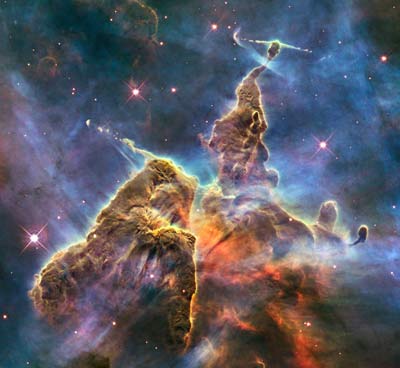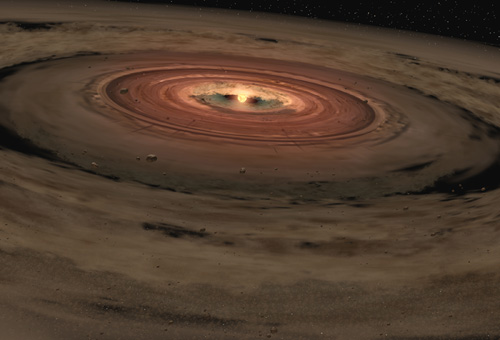How does angular momentum relate to our solar system?
1 Answer
The planets and moons rotations and orbits all rotate in the same direction, which is the direction of rotation of the original disk that formed them.
Explanation:
According to the solar nebula theory, our solar system was formed out of a huge cloud of gas and dust. Each of those gas and dust particles had some sort of random motion.

After some impulse, perhaps a nearby supernova, the nebula began to collapse. As the cloud became more dense, collisions occurred at an increased rate. Through these collisions, the motion of all of the particles was averaged out. The result was a spinning disk of material. This protoplanetary disk would eventually form the sun and the planets.

Because the disk was spinning, it had some angular momentum associated with it. The material in the middle was eventually pulled together by gravity to become the sun. The rest of the disk became the planets, moons, and other bodies in the solar system, or was blown out into space by the newly formed sun.
Since all of these bodies formed from the same rotating disk, they all rotate in the same direction. From above the solar system, the planets move around the sun in a counter clockwise motion. The moons of our solar system orbit their planets in a counter clockwise motion. Even the rotation of the planets themselves is counter clockwise.
That's because of conservation of angular momentum. The material that formed each of the bodies in our solar system had some rotational motion. That rotational motion continued even as the material was condensing to form planets and moons.

